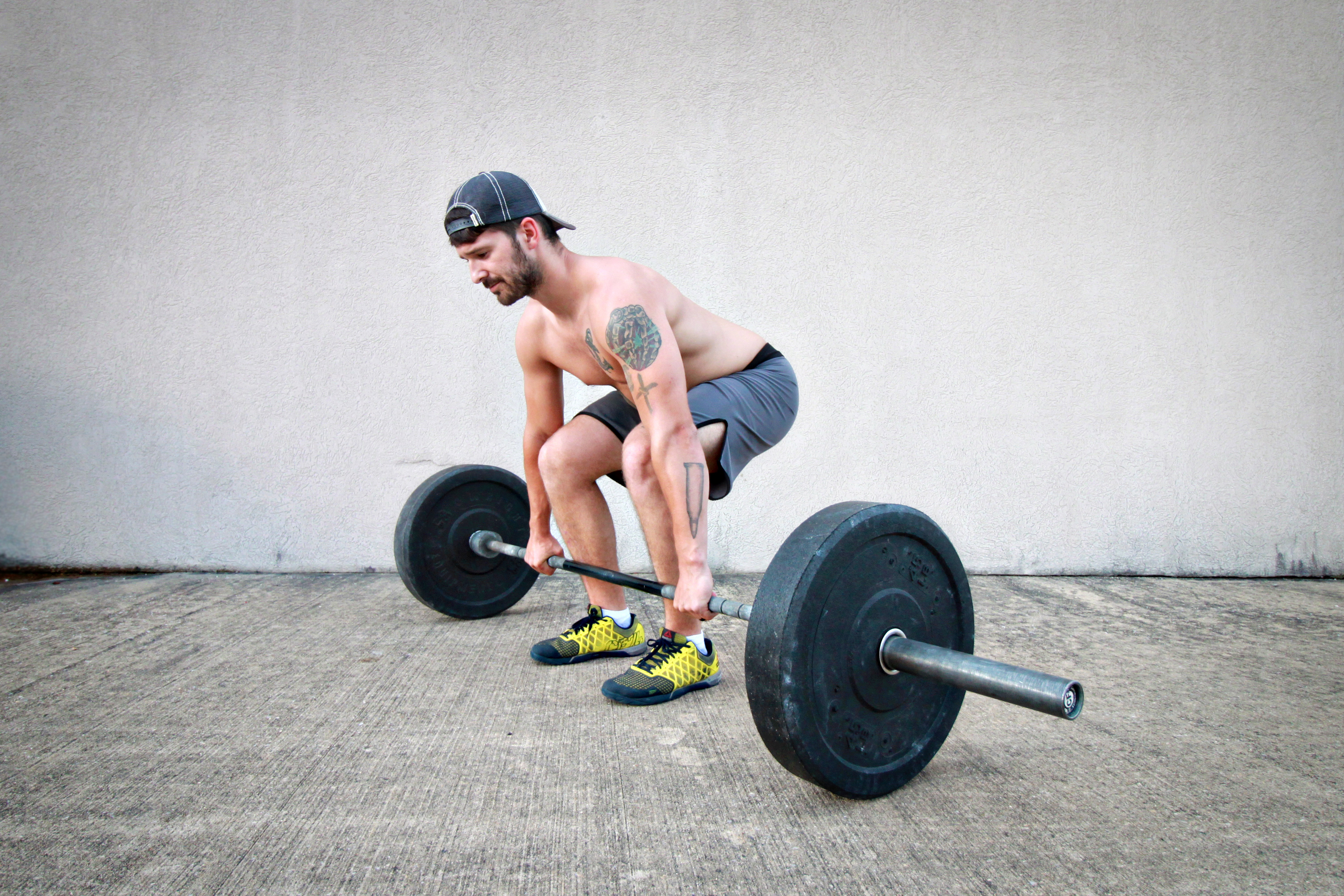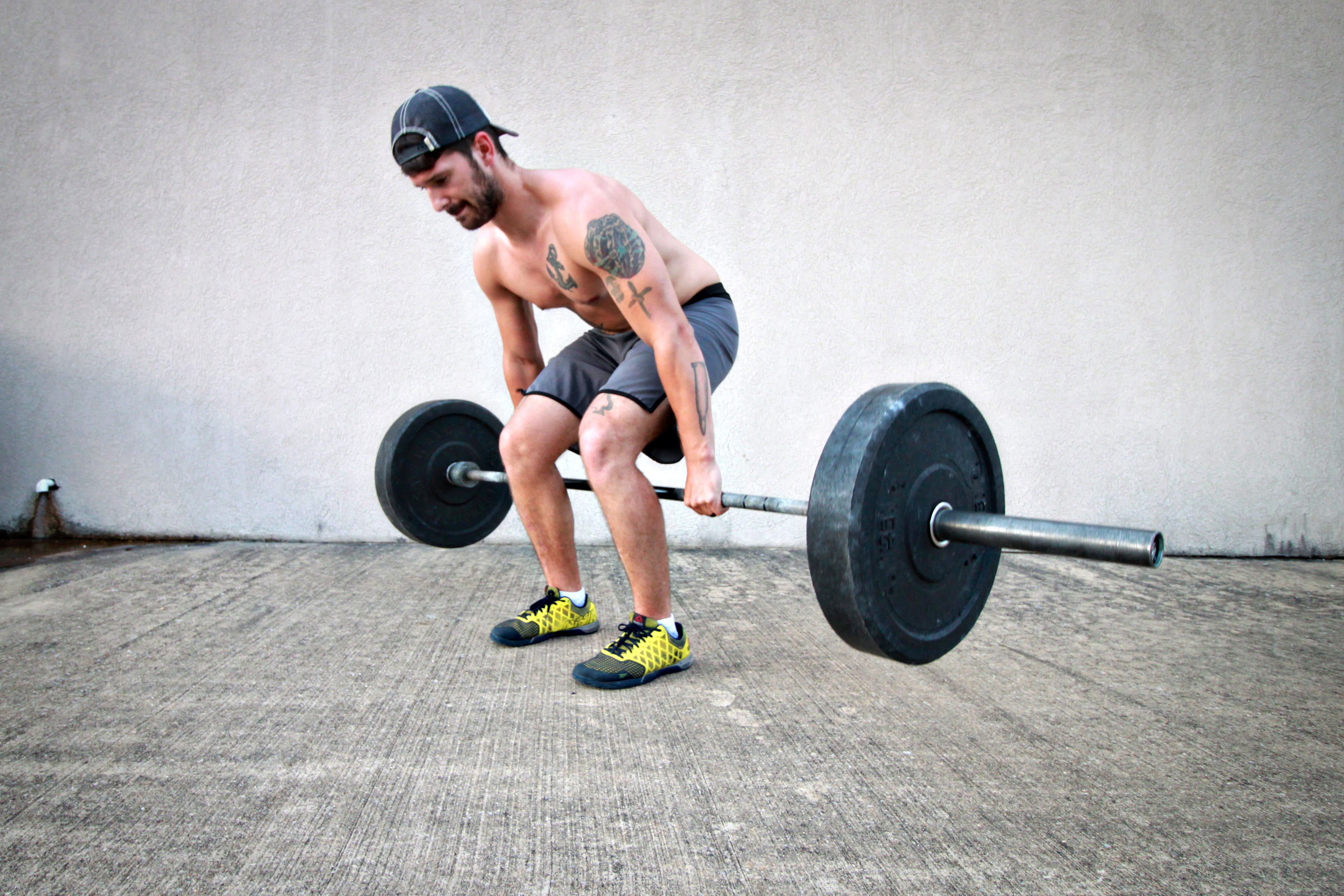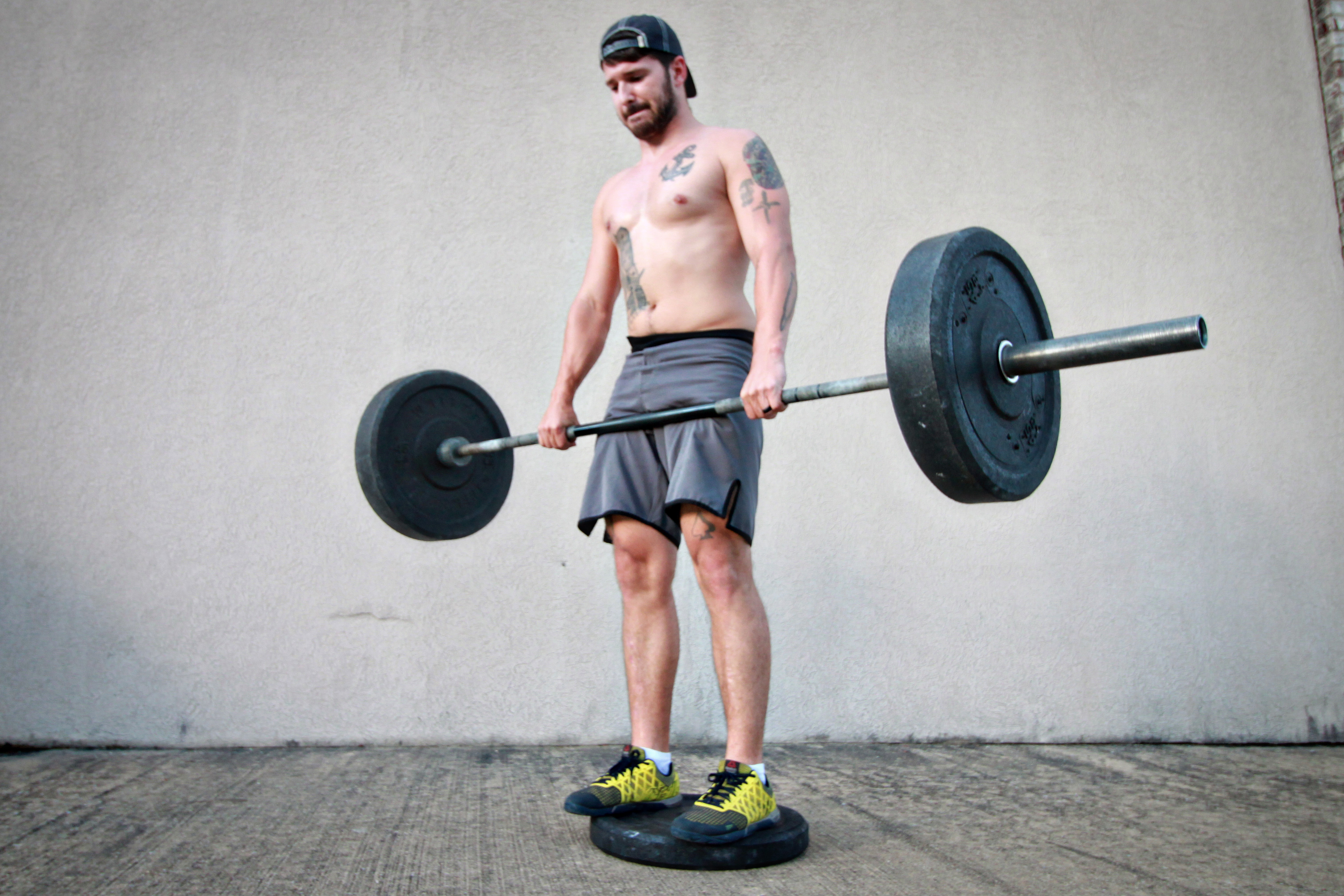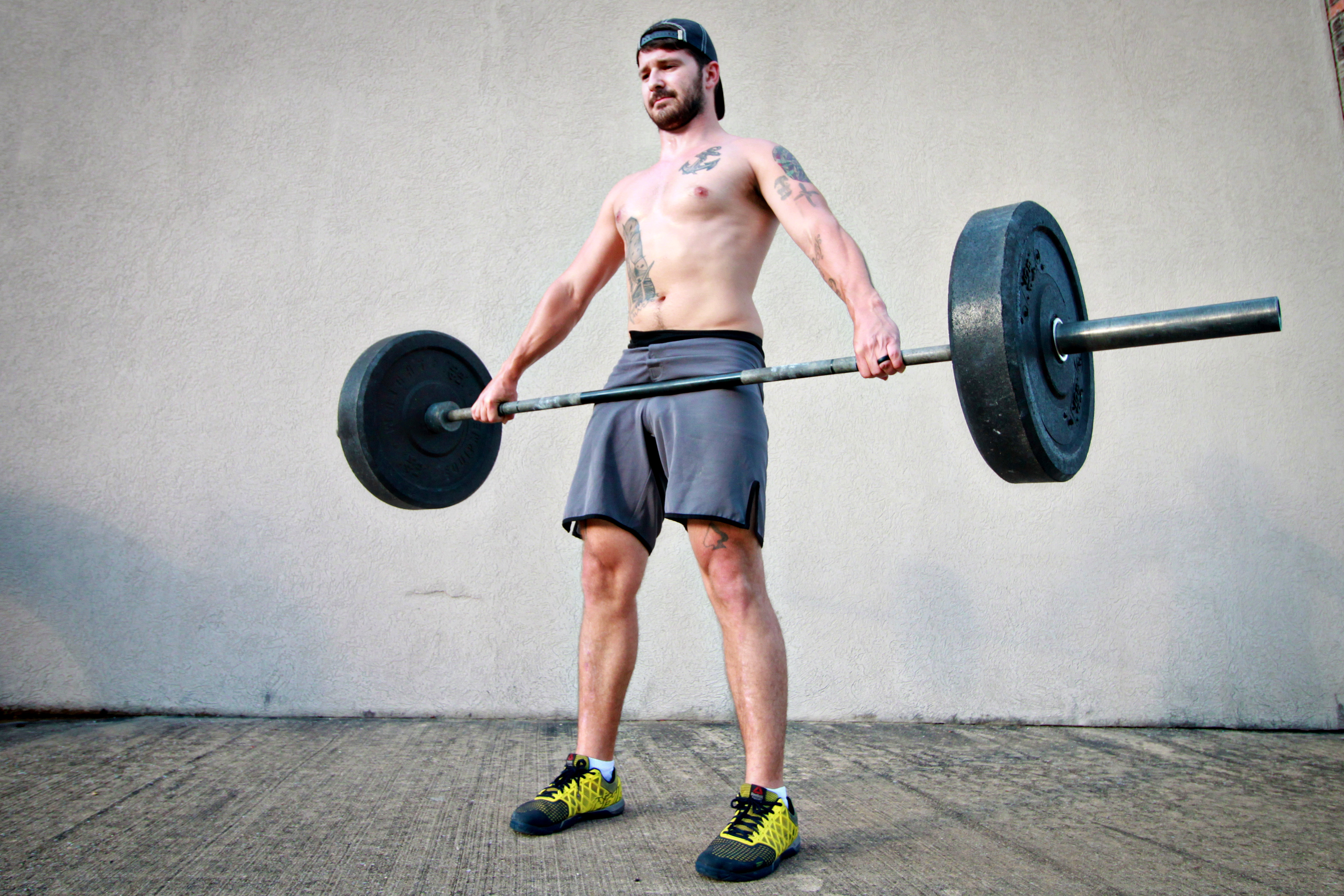Deadlifts fall into the category of a power lift. For many outsiders looking in, they may seem like one of the simplest lifts. I mean, how hard is it to pull a bar up off the floor? And deadlifts are simple — but simultaneously so complicated. Performing one incorrectly even once runs a much larger margin of injury than most lifts and many a great athlete has been scared away from Olympic and power lifting due to a bad experience with the deadlift.
However, when you perform deadlifts correctly, they’re an incredible mechanism for building posterior strength. Not only that, but it feels pretty freakin’ cool to muscle large amounts of weight off the floor. By incorporating deadlift and deadlift variations into your regular fitness routine, you’re sure to see a marked improvement in strength across a wide variety of movements including your other lifts.
11 Deadlift Variations and Why They’re Important
1. Regular Deadlift
The classic deadlift is a powerlift designed to work your glutes and hamstrings when performed correctly. The loaded barbell will start on the ground. You will put your feet under the bar, place your hands shoulder-width apart on the bar with a flat back and neutral neck and spine and lift using your posterior chain.
The classic deadlift can be a tricky lift due to people’s propensity to use their lower back instead of the glute, core and leg muscles. If you’ve never deadlifted before, make sure to do it with supervision to ensure that you’re keeping a flat, neutral spine throughout the lift. Beware a curved back and make sure your knees stay behind the bar.
2. Romanian Deadlift
Want a workout that will leave your hamstrings and glutes singing? Try a Romanian deadlift. Similar to the classic deadlift, a Romanian deadlift sets up the same way but removes the knees from the lift.
When you’re performing the Romanian deadlift, you keep your legs straight and locked out, putting the load squarely on your posterior chain. In addition, your feet will be in a narrow stance, adding even more pressure to your hamstrings and glutes.
3. Sumo Deadlift
A sumo deadlift is great for athletes who are working around back injuries or who may be a little gun shy about performing a traditional deadlift.
In the sumo deadlift, the athlete approaches the bar with his or her feet set wide and a narrow grip on the bar. The lift in itself is still the same concept — bringing the barbell from the floor to full extension. Many athletes find that they can lift heavier weight loads using this variation.
4. Trap Bar Deadlift
In case you haven’t noticed, the deadlift can be a little rough on your lower back, especially if you have a pre-existing injury or if you’re performing the incorrectly. Like the sumo deadlift, the trap bar deadlift enables the athlete to perform a deadlift with less stress on the back.
The trap bar deadlift is performed with a special barbell that resembles a cage. The athlete can actually step into the middle of the trap bar and grab handles on either side to move weight as opposed to a traditional barbell, which centers the weight in front of the athlete.
5. The Hacklift
This deadlift is great for when you want to change things up or work on your balance. It’s similar to a conventional deadlift except that obviously, you load it from behind.
This lift can be great for a lot of reasons — it’s killer for building quad strength and can get you out of a deadlift rut. However, this lift can be harder on the knees than a conventional deadlift. Make sure you talk with your coach if you have a pre-existing injury or concern.
6. From the Rack
If you’re struggling with form or technique, the from the rack deadlift is a great way to minimize your range of motion in the lift. This lift is great for people who lift well through the first phase of a deadlift but lose their form as they extend their hips and straighten out at the top of the lift.
To perform a from the rack deadlift, set up a lifting area on your rig with the bar hooks at about mid-shin. From there, you can perform your lift and really compartmentalize each phase of the movement, isolating problem areas and improving them.
7. Kettlebell Deadlifts
Kettlebell deadlifts can be performed with kettlebells in both hands or by alternating one on each side. You can do these just to change up your routine or to re-route around a side-specific injury.
Kettlebells are also more practical for an up-and-coming home gym, as they tend to be a little bit cheaper than a full barbell and weight set up. For more awesome ways to use kettlebells to get into shape, check out our Ultimate Guide to Kettlebell Exercises.
8. Deficit Deadlifts
If you’re struggling with the first stage of your deadlift — that is, the pull — deficit deadlifts are a great way to work on that.
Quite the opposite of a from the rack deadlift, a defecit deadlift, usually performed from atop a plate or box, increases your range of motion. Be careful — some people tend to compensate for the longer pull by recruiting their lower back muscles. This is NOT proper form and will cause you to injure yourself. If you already struggle with using your lower back in deadlifts, talk to your coach before performing this lift.
9. Snatch Grip Deadlift
This deadlift benefits the usual suspects — your posterior chain including your hamstrings and glutes — but also performs an excellent workout on your upper body including the shoulders, pecs and trap muscles.
This deadlift variation has several different benefits — it forces your body to start in a lower position with a much wider grip than a conventional deadlift — which can translate into lifting heavier weight when you go back to your regularly-scheduled deadlifts. Training that snatch grip can also lead to being able to throw up heavier weight when it comes to your snatches and power snatches in the gym.
10. Dumbbell Deadlift
On the go with no equipment? Luckily, almost any standard gym including hotel gyms pack dumbbells.
You perform a dumbbell deadlift the same way you would a standard deadlift or a kettlebell deadlift and recruit the same muscle groups to perform the movement. Don’t let a different delivery mechanism relax your standards — keep your spine neutral and lift with your bottom.
11. One Legged Deadlift
If you want to work on technique or if you’re into bodybuilding and isolating specific muscle groups, the one-legged deadlift might be just what you’re looking for.
At risk of stating the obvious, you will not be able to deadlift your normal weight using only one leg. Instead of snapping a hamstring, reduce your weight greatly until you find something that you can comfortably move while balanced on one leg.
If you enjoy this movement, you can also combine variations of the conventional deadlift, deficit deadlift, from the rack deadlift and Romanian deadlift for different ways to torture and strengthen your quads, hamstrings and glutes.
